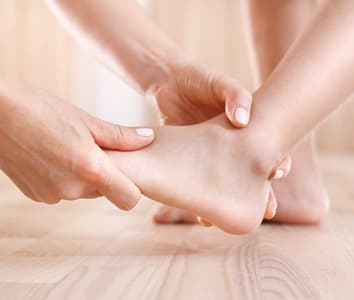pediatric foot doctor | Podiatry Specialist | Dallas podiatry works | pediatric podiatrist near me Plano, Frisco, Allen, Mckinney, Carrolton, TX
Many foot and ankle conditions in kids can be easily treated, correcting the problem before it becomes a deformity. Common foot disorders in children include in-toeing and out-toeing, flat feet, toe walking, inflamed growth plates, ingrown toenails, athlete’s foot, and other skin conditions. Children will often refrain from complaining about pain associated with their sport. The demands of soccer, baseball, dance, and gymnastics on the growing child will often uncover underlying foot problems.

COMMON PEDIATRIC FOOT PROBLEMS:
Children can get huge numbers of a similar foot issues as adults, yet a few conditions may take on various attributes, and some may happen frequently in children because of their dynamic ways of life, sensitive skin, and growing bodies. The most widely recognized foot and lower leg issues found in children include:
HEEL PAIN:
Heel pain in children is frequently brought about by repeated stress on the development plate in the heel bone. Calcaneal apophysitis (Sever’s malady) causes inflammation and pain in the back and lower part of either of the heels.
It is a typical reason for foot pain in active children from 8 to 14 years old on the grounds that the new bone is as yet framing at the development plate and doesn’t completely develop until in age of 14. Overuse from running, bouncing, and beating on hard surfaces can disturb the heel’s development plate causing muscle strain and inflamed tissue.
Heel pain may likewise happen because of different conditions, for example,
- Irritation of nerves under the heel.
- Bursitis – pain and inflammation of the bursae (padding between bones, ligaments, and muscles)
- Heel spikes – abnormal bony growth that create at the back of or under the heel.
Treatment for heel pain normally includes taking a break from exercises that put weight on the heel bone, utilizing orthotics to help the heel, taking nonsteroidal calming drug to ease pain symptoms, and stretching the Achilles ligament and lower leg muscles. Immobilizing the foot and lower leg might be important for serious instances of pediatric impact point torment. If the heel pain perseveres or reoccurs, different medicines might be used.
FLAT FEET:
Flexible flatfoot is generally common in children and is characterized by an arch that vanishes when the child stands up (so the feet show up level) however returns when sitting. The condition for the most part happens in the two feet. Most children don’t experience any symptoms from the condition, yet the individuals who do, may feel pain or cramping in the feet or legs while walking.
If your child does show any symptoms, they can generally be relieved by wearing comfortable shoes and custom-made shoe orthotics for arch support. Look for pediatric podiatrist if your child quits playing sports or pulls back from other physical activities because of flatfoot symptoms.
PLANTAR WARTS:
Plantar warts typically develop on weight-bearing areas of the foot, for example, the heel or ball of the foot which takes the most weight. They are non-malignant skin developments brought about by a viral disease – human papillomavirus (HPV) – in the top layers of the skin. After some time, warts can develop inwards, into the foot which can be painful. Warts can be transferred effectively through individual to individual contact, for example, from floors in mutual areas (locker rooms and public showers). They are exceptionally infectious.
Plantar warts may in the long run disappear all alone without treatment, however if they are painful, your podiatrist can eliminate a plantar wart effectively and more viably than an over-the-counter cure.
ATHLETE’S FOOT:
Athlete’s foot or tinea pedis is a typical and infectious contagious fungal disease. It can cause a scaly rash that can burn, sting, and tingle and may prompt rankles or dry, broken skin on your feet. It normally shows up between the toes and on the bottoms of the feet and can spread to the toenails and cause contagious nail infections. It happens after direct presentation to fungi (counting yeast), commonly in a moist climate like a locker room, public showers, or pool or from the skin to skin contact with an infected individual.
PEDIATRIC FOOT PROBLEMS IN PLANO, TX:
If you are searching any good pediatric podiatrist for your child in Plano, you can visit Dr. Zubeen Mistry, he is a skilled pediatric podiatrist. DFW Foot and Ankle Care offers several treatment options if you are concerned about your child’s feet. Dr. Mistry works with parents to develop a plan of action that meets your child’s individual needs. To learn more about treatment options for pediatric foot problems or schedule an appointment, contact our office at (469) 551-8595
At DFW Foot Ankle Care, we treat Bunions and Hammertoes, Diabetic Foot Care, Fungal Nails, Heel Pain / Plantar Fasciitis, Ingrown Toenails, Minimally Invasive Surgery, Neuroma, Pediatric Foot Problems, Plantar Wart, Running Injuries and many more foot problems.
Same Day & Late appointments are available at DFW Foot and Ankle Care. Please call us for availability

